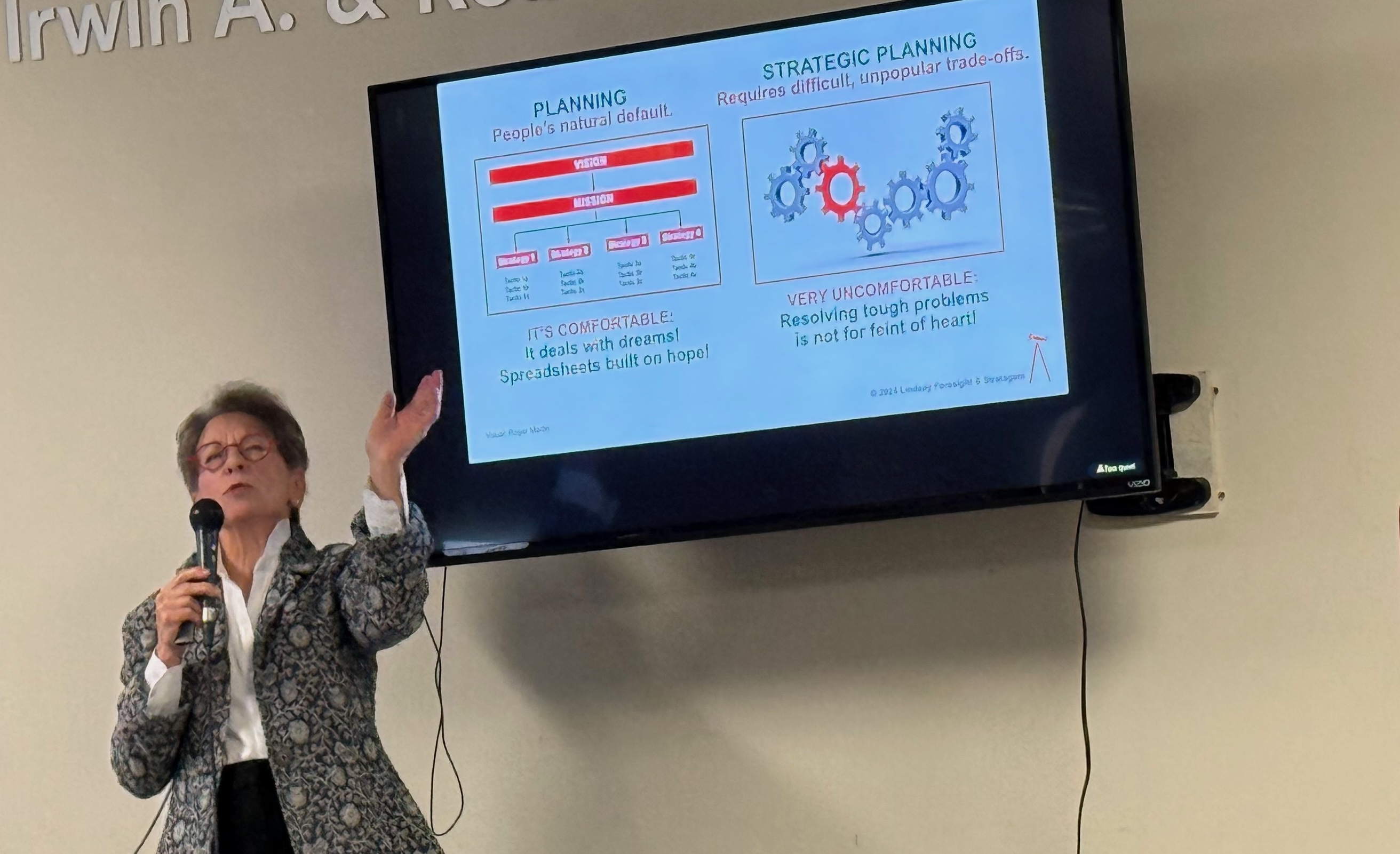Stratagem Weekly
Six Insights for Today's Strategic Planning
When I teach effective problem-solving and cost/benefit analysis to community leaders, they tell me it helps them overcome societal challenges at work and even at home. The six insights below, which I recently shared in a workshop with Leadership Greater Madison, are hyper-relevant to you:
1. It’s not your imagination: Problems are getting harder to solve and increasingly ‘wicked’ in complexity, as explained in John C. Camillus' 2008 HBR article:
• Outcomes are determined by the interaction of diverse heterogeneous agents with conflicting priorities.
•Anticipating other’s actions and priorities that morph constantly make everything dynamic.
•Behaviors, actions, and plans are continually revised.
•Perpetual novelty rules, continually created by new markets, new technologies, new behaviors, new institutions.
•Ergo, the problem you were trying to solve a minute ago has changed.
2. Despite the above, there’s increased hope for solutions to society’s tough problems. It’s because so many believe they can be solved. (Belief is a powerful force.) Innovative business models and new technologies are enabling new solutions in a way like never before. Innovations are especially important to non-profits. (‘Non-profit’ is a misnomer: They especially need revenues that exceed expenses. And with expenses rising, embracing new revenue models and tech-enabled efficiencies is critical.)
3. No organization can be viable a few years from now if it doesn't develop sound long-term strategies for predictable revenue streams and operating profit. Both require a strategy for competitive advantage: Of course, this is expected of ‘for-profits.’ But non-profits also need a case for the compelling role they play in people’s lives over alternatives, or they’ll suffer at the
hands of others who have a value proposition more motivating to donors, grantmakers and governments.
4. A surprise to many: Solving the problems of business and society must and can be done by building competitive advantage into a problem’s resolution. This requires a deep understanding of strategy: what it is and isn’t; how to apply it via a critical thinking process that identifies the root of the issue you’re trying to resolve; how to effectively (strategically) plan for issue resolution.
5. Whether an org is for-profit or not, it’s best to design possible resolution strategies, each then analyzed for cost to those who’ll be asked to pay for them; the solution’s value proposition in their eyes. (This is a cost/benefit analysis.)
6. Finally, this best practice: Before problem-solving efforts begin, those driving, approving, and carrying out a resolution must be educated and aligned on the same things above, or ‘wickedness’ will reign!
I taught these to the Leadership Greater Madison class of 2024 and they were so valued that I was invited to teach them again to the Class of 2025. If you know someone who is trying to make the world better, consider forwarding these.
See the conversation about my post, visit my LinkedIn page.
